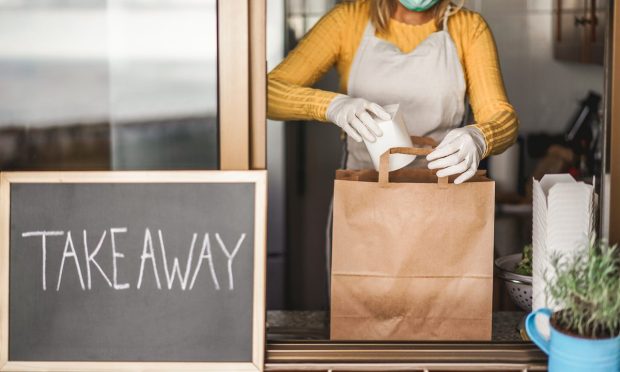5 Digital Developments Transforming Food Commerce

In 2021, restaurants and grocery stores took the digital developments that had gotten underway the previous year to the next level, increasingly bringing the food commerce experience into the eCommerce sphere. Now, with coronavirus case numbers at an all-time high, these businesses have an opportunity to do what they did in the early months of 2020, leveraging stay-at-home trends to accelerate consumer adoption and drive long-term habit changes.
Ghost Kitchens Go Mainstream
With the ghost kitchen model having proved profitable in the early months of the pandemic, many brands went all in during 2021, increasing their number of digital locations from just a handful to hundreds. With the widespread adoption of third-party delivery marketplaces, these delivery-only locations with no consumer-facing physical presence have become a mainstay of the industry.
“The dynamic of the 1950s where somebody would cook six square meals a week and maybe go out once a week is going to be totally the opposite,” Marc Choy, president of Ghost Kitchen Brands, told Karen Webster in an interview. “This is how people are going to know how to get their food — by ordering.”
Read more: In-Store Ghost Kitchens Turn Walmart Into Uber Eats Competitor
Still, some are skeptical of this rapid rise.
“You could look at meal kits as an example, where a lot of companies had a quick rise and success and then faltered,” Steve Fredette, president and co-founder of restaurant software company Toast, told PYMNTS, “and so there’s a good question, with ghost kitchens or cloud kitchens, of how important are they going to be in the long term.”
See also: Toast President Says Ghost Kitchens No Substitute for On-Premises Dining Experience
D2C Meal Solutions
While Fredette may have used meal kits as an example of a flawed business model, and while some brands may continue to make a profit with their meal subscription businesses, major forays into the space by large firms, backed by their large infrastructure and spending capabilities, are seeing more success. For instance, in late October, Kroger announced that its Home Chef brand, which offers meal kits and prepared meals, had surpassed $1 billion in annual sales.
Related news: Kroger’s Home Chef Sales Soar as Consumers Seek Alternative to Increasingly Costly Restaurant Delivery
Ultrafast Delivery
In the grocery industry, on-demand deliveries within 10-15 minutes are rapidly becoming available throughout the country and around the world. While the trend began largely with startups built for this very purpose, major players such as DoorDash have recently been joining in, launching their own ultrafast efforts.
“While humans once had to fetch water from a well, we have long since developed systems to deliver this essential resource straight to taps in our homes,” Slava Bocharov, co-founder of Buyk, told PYMNTS in an interview. “We believe that, as ultrafast grocery delivery becomes more widely available, it will come to be seen as a crucial piece of infrastructure for daily life in much the same way.”
You may also like: Ultra-Fast Grocery Delivery Companies Expect a Future of Consolidation
Beer, Wine and Spirits Get the On-Demand Treatment
Throughout last year, Uber closed its acquisition of on-demand alcoholic beverage delivery service Drizly, DoorDash added alcoholic beverages to its marketplace, and Instacart expanded the reach of its beer, wine and spirits delivery options. However, adoption of eCommerce remains low. This year, with on-demand delivery now more available than ever, brands, retailers, restaurants and marketplaces will likely find creative and compelling ways to incentivize consumers to take advantage of the options available to them.
For more: On-Demand Alcohol Delivery Options Expand Despite Slow Adoption
Frictionless Checkout
Frictionless checkout in the style of Amazon’s “Just Walk Out” technology took hold internationally in 2021 across restaurants, grocers, and convenience stores, with brands ranging from Starbucks to Tesco to Circle K making moves in the space.
“In five years, I believe that you will have thousands of autonomous stores,” Yair Holtzer, vice president of business development at cashier-less checkout solution Trigo, predicted to PYMNTS. “You will be able to still buy in the traditional way, if you want … but you will also be able to choose the green lane to just walk in, grab the items and walk out.”
Related: Frictionless Checkout Brings eCommerce Convenience into Stores to Drive Conversion
